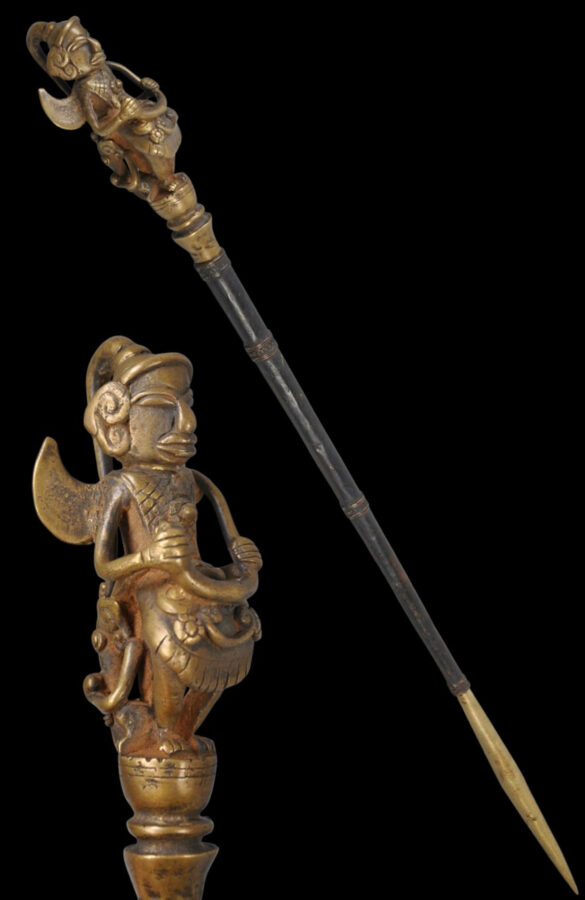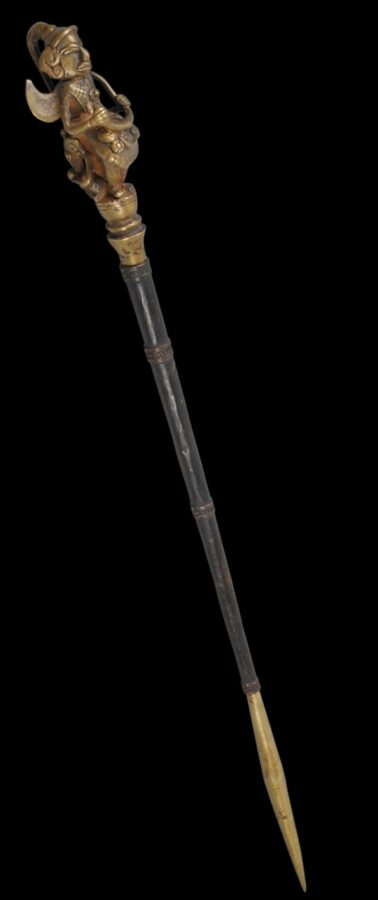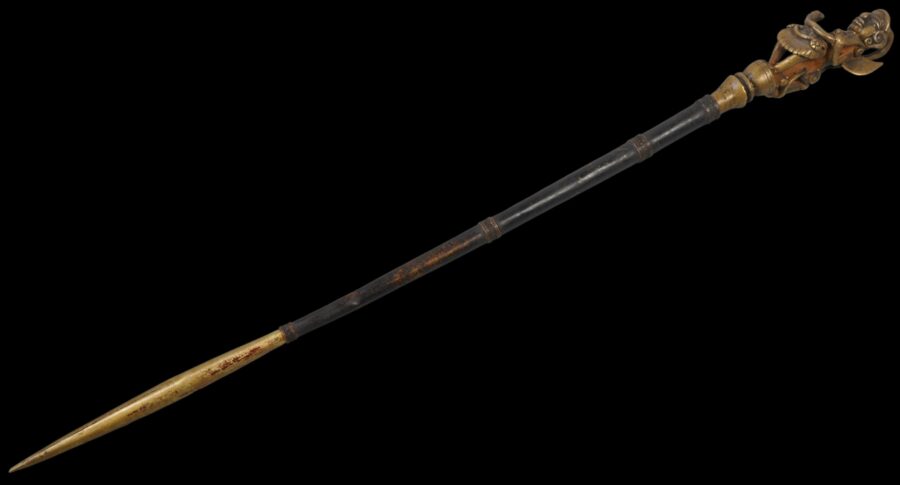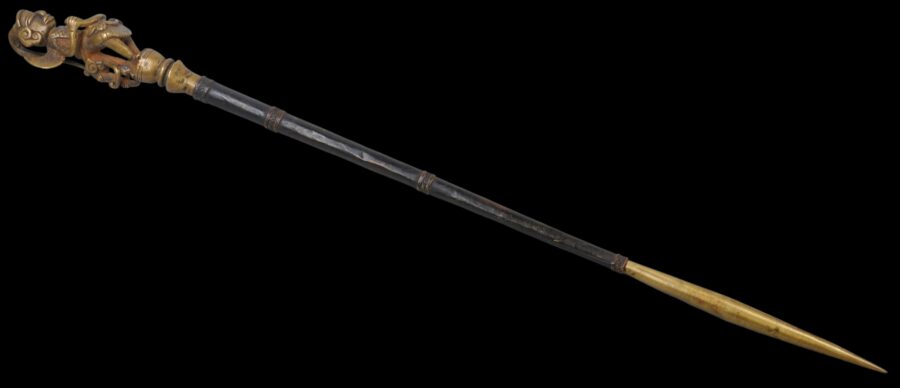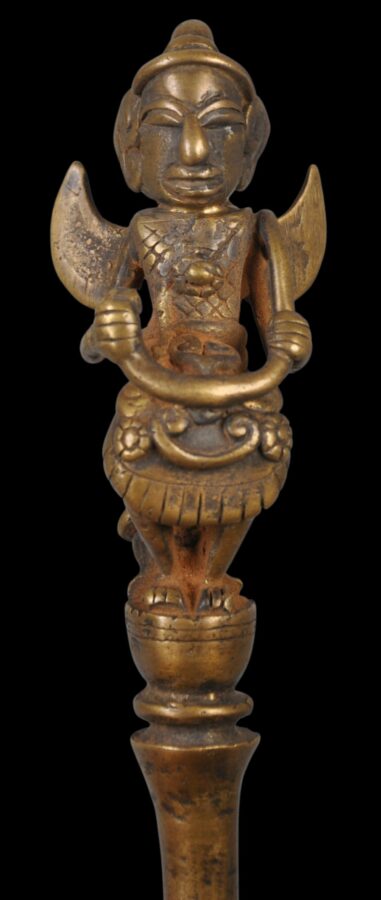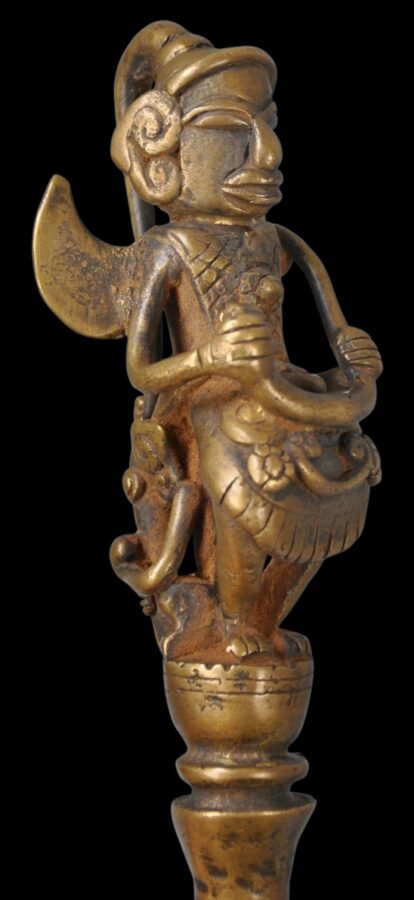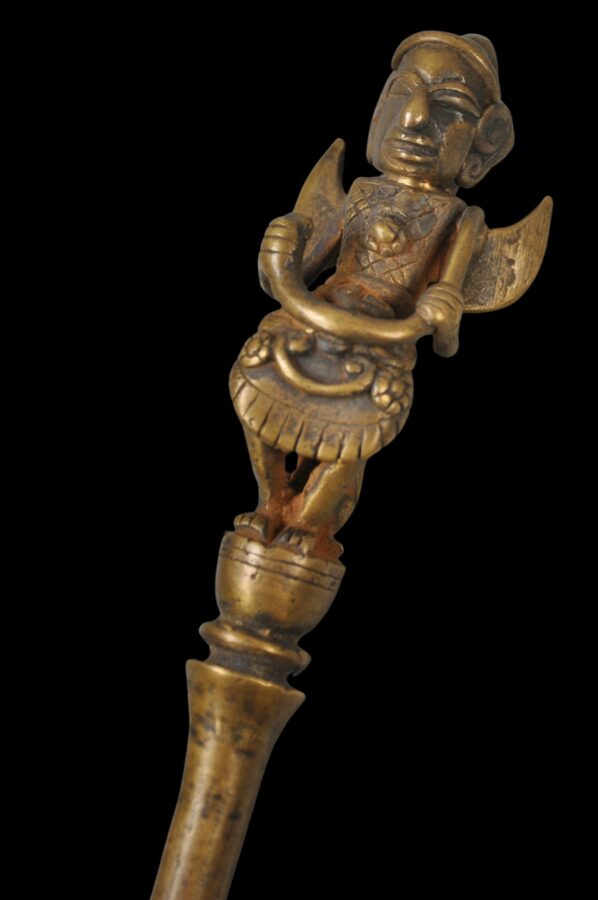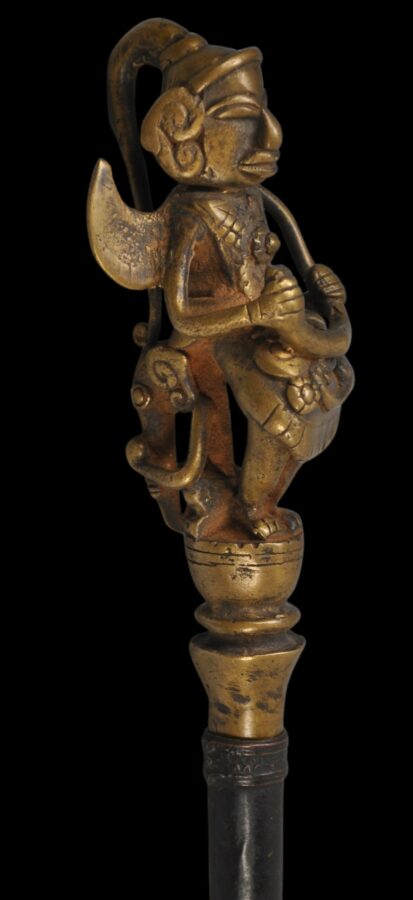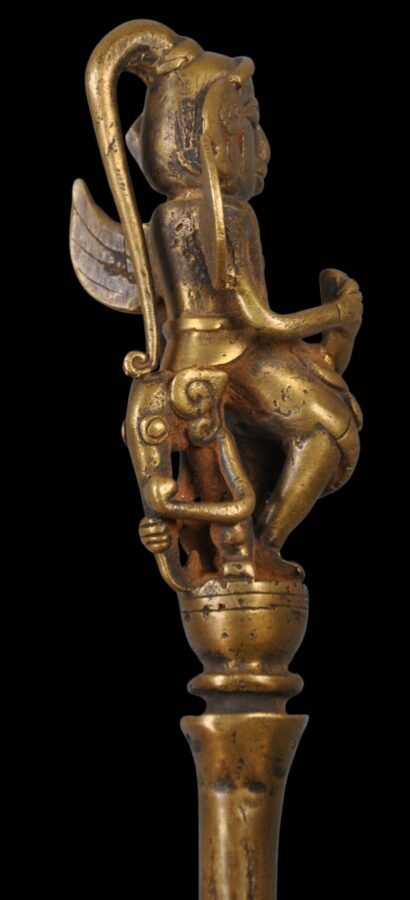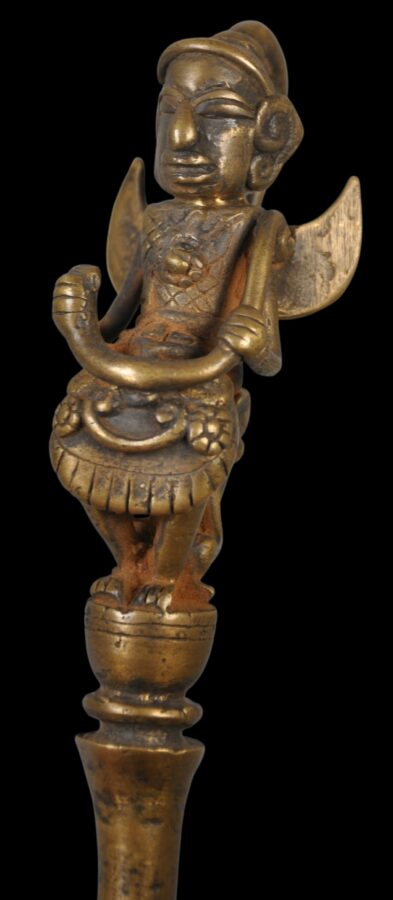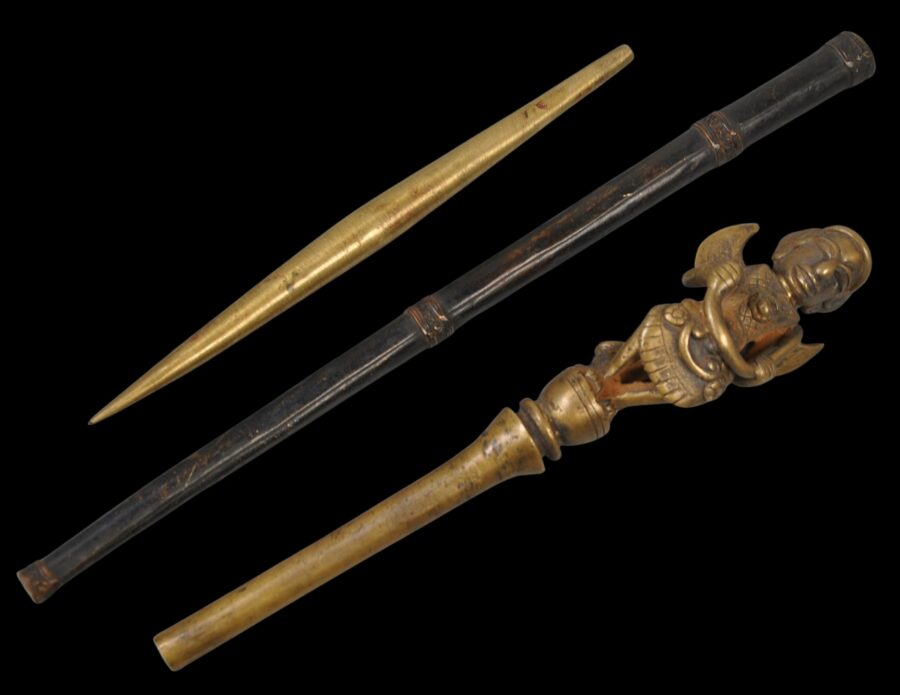Enquiry about object: 5573
Burmese Tattoo Needle & Weight
Burma (Myanmar) 19th century
length: 45.8cm weight: 281g
Provenance
UK art market
This Burmese tattooing implement comes in three parts – all such implements did. It comprises a solid, pointed style which has a slit cut into it which functioned as a reservoir for the ink; a hollow tube; and a solid-cast complex weight in the form of a winged figure, probably a nat, with the head of an elephant poking out from the reverse. This was inserted into the tube. Such weights could be changed according to which type of mythological figure was deemed suitable.
Almost all Burmese men were tattooed in pre-colonial times, from the waist to the knees, and occasionally with additional tattoos on the chest and back. The process was arduous and painful and the recipients often were given opium to help with the pain.
The motifs used were usually talismanic or protective and included animals such as tigers and monkeys, ogres, and protective letters from the Burmese alphabet. Such tattoos were felt to increase one’s invincibility against weaponry, disease, as well as increasing one’s sexual prowess. Tattooing also was used by Burmese officials to identify criminals, palace servants, soldiers and slaves.
Tattooing was performed by itinerant tattooists who travelled from village to village to offer their services. Motifs were selected by the customer from illustrated palm leaf or folding paper books. The design was then pricked into the skin using a brass tattooing implement such as the one here. The tattooist usually worked with an assistant, partly because the tattooing implement with its weight was cumbersome to use.
The ink used to make the tattoo comprised lampblack or vermilion, mixed with oils and animal gall.
The tattooist selected the weight to be used according to the pattern being tattooed, and it was felt that the mythological form of the weight, drawn from Burmese mythology or lore such as a deity or a nat, would confer protective power to the motif.
The practice of tattooing the thighs died out during the colonial era, and when tattooing was done, by the 1920s it was done by electrical devices – the use of weighted styles had fallen from favour.
A related tattoo implement is illustrated in Fraser-Lu (1994, p. 139) and another held in the British Museum is in Green (2023, p. 127).
The example here is in excellent condition with obvious age.
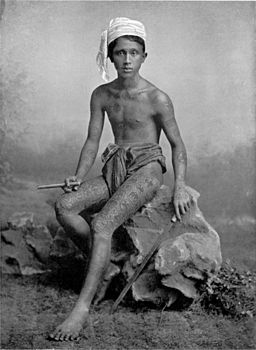
Above: A studio portrait of a young Burmese man showing his heavily tattooed thighs, 1912.
References
Falconer, J. et al, Myanmar Style: Art, Architecture and Design of Burma, Thames & Hudson, 1998.
Fraser-Lu, S., Burmese Crafts: Past and Present, Oxford University Press, 1994.
Green, A., Southeast Asia: A History in Objects, Thames & Hudson/British Museum, 2023.


